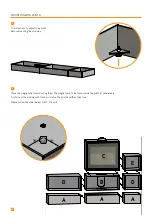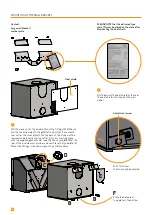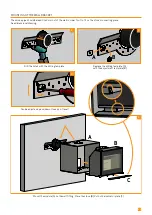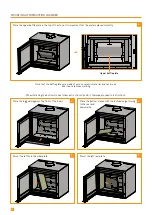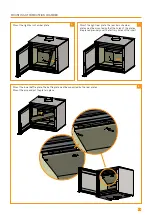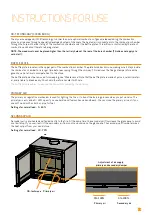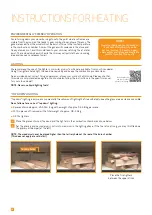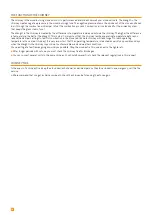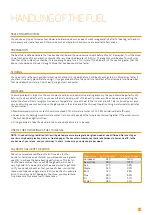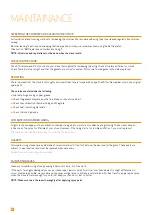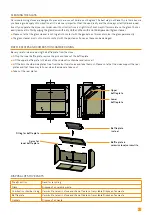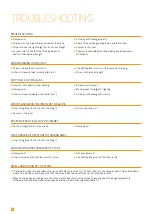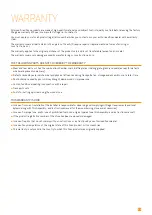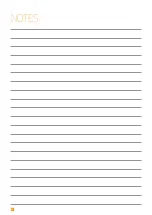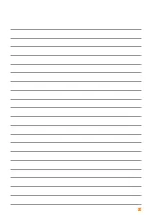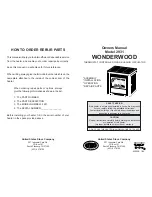
29
The various woods have different calorific values. In other
words, for certain species of wood, you will need to use a greater
quantity to achieve the same heating performance. This Instuc-
tion Manual assumes that you will be using beach, which has a
very high calorific value and is also the easiest wood to get hold
on. If you use oak or beech as fuel, you need to bear in mind that
these wood types have a greater calorific value than for example
birch. To avoid any risk of damage to the stove, you should there-
fore make sure to use less fuel in these cases.
CALORIFIC VALUE OF THE WOOD
Wood types
kg Drywood/m
3
Compared to beech
Hornbeam
640
110%
Beech/Oak
580
100%
Ash
570
98%
Maple
540
93%
Birch
510
88%
Pine
480
83%
Fir
390
67%
Poplar
380
65%
HANDLING OF THE FUEL
SELECTING WOOD/FUEL
You can use any type of wood as fuel. However harder woods, such as beech or ash, are generally better for heating, as they burn
more evenly and create less ash. Other woods, such as maple, birch and spruce, are excellent alternatives.
PREPARATION
The best fuel is obtained where the tree has been felled and the wood sawn and split before May 1st. Remember to cut the wood
to match the size of the combustion chamber. We recommend a diameter of 6-10 cm. The length should be about 6 cm shorter
than that of the combustion chamber to leave enough space for air to circulate. If the diameter of the wood is greater than the
above, it should be split down its length. Wood that has been split dries faster.
STORING
You need to store the sawn and split wood in a dry place for 1-2 years before it will be dry enough to burn. Wood dries faster if
you stack it in an airy place. Before using it, it is a good idea to store the wood for a few days at room temperature. Remember
that wood absorbs moisture from the air during autumn and winter.
MOISTURE
To avoid problematic impact on the environment and to ensure optimum operating economy, the wood should be perfectly dry
before it can be used as fuel. If you use wood that is too damp, most of the heat it produces will be used up in evaporating the
water. The stove will accordingly not increase in temperature, nor emit heat to the room as a result. This is obviously poor econ-
omy, and it will cause soot build-up on the glass pane, in the stove and in the chimney. Operation using moist wood also pollutes
the environment.
¬
Maximum wood moisture content should not exceed 20%. A moisture content of 15-18% will deliver best efficiency
¬
An easy way of checking wood moisture content is to knock the ends of the two pieces of wood together. If the wood is moist,
the sound will be slightly muffled
¬
It is a good idea to take the wood into the house a day before it is to be used
USE OF THE FOLLOWING AS FUEL IS ILLEGAL
NOTE: It is absolutely prohibited to fire with painted, pressure impregnated or glued wood or sea driftwood. Nor should you
ever burn chipboard, plastics, waste or treated paper. These contain substances that are hazardous to human health, to the
environment, your stove, and your chimney. In short - make sure you only use proper wood.
Содержание 1004-B
Страница 34: ...34 NOTES...
Страница 35: ...35...




